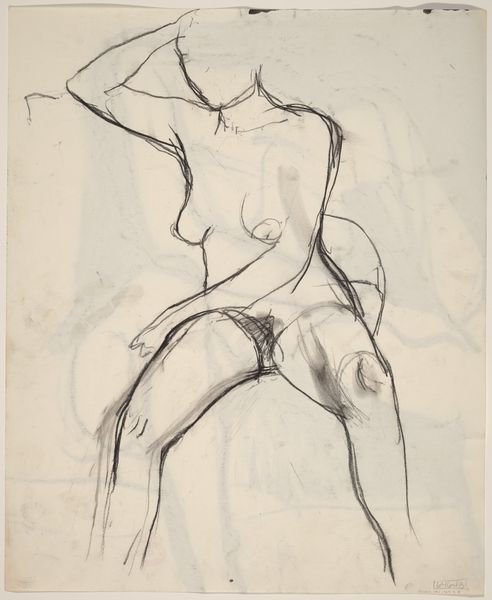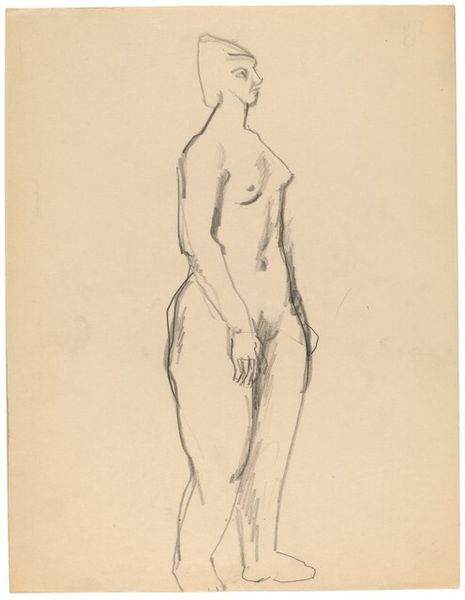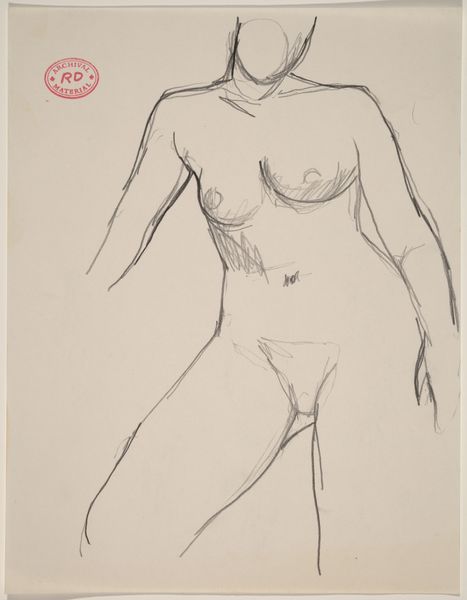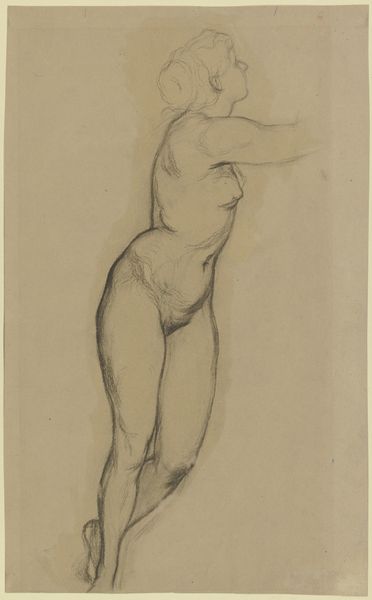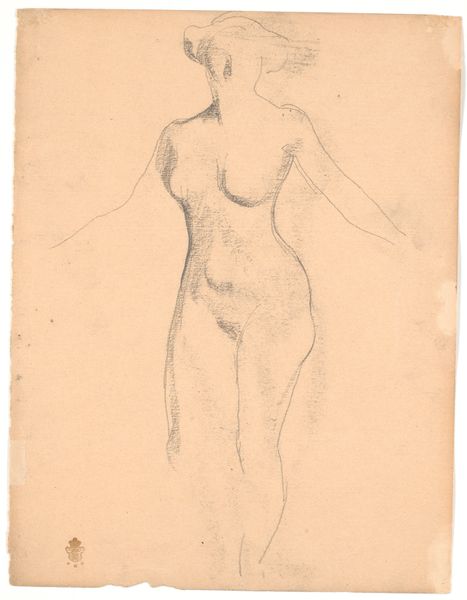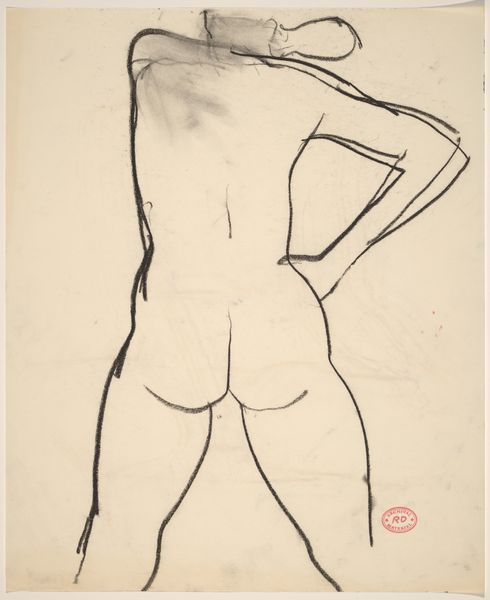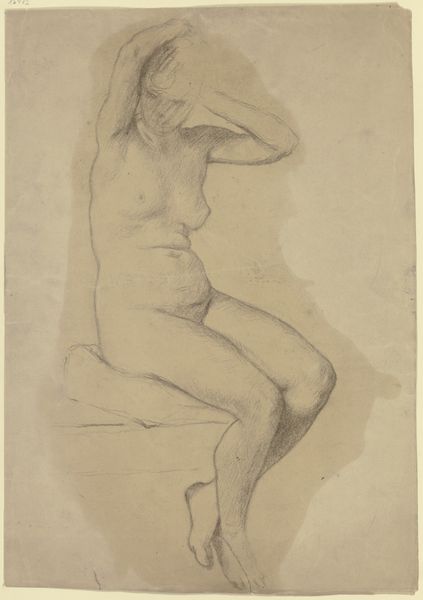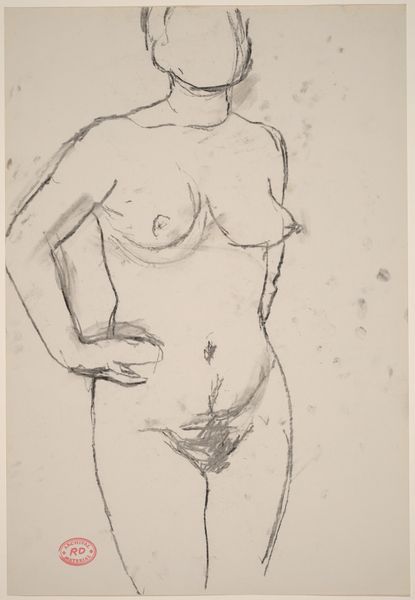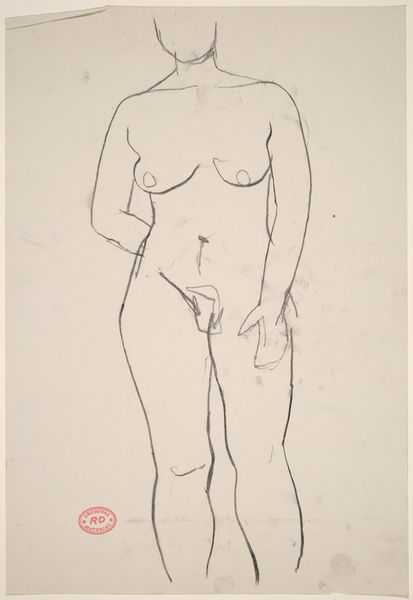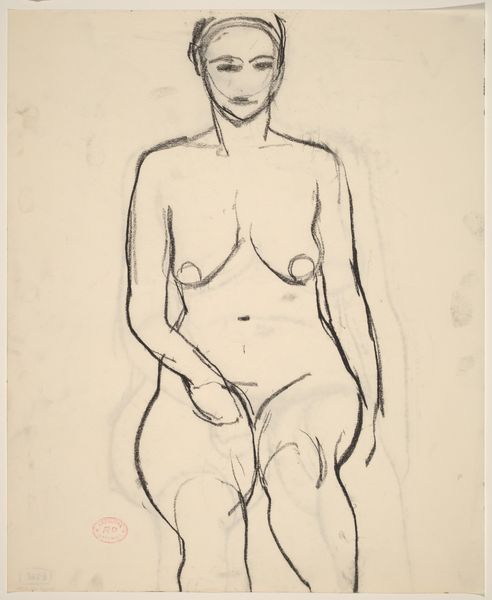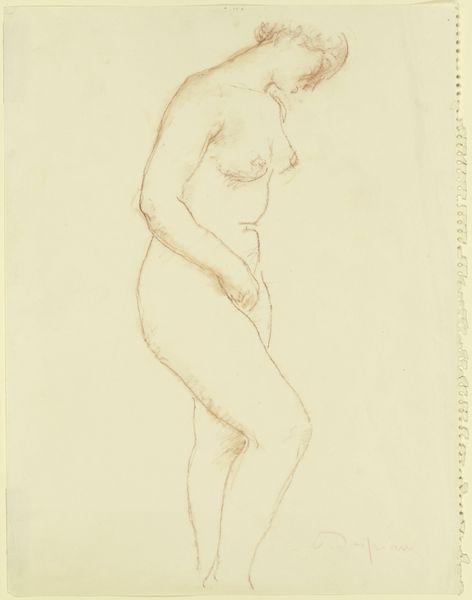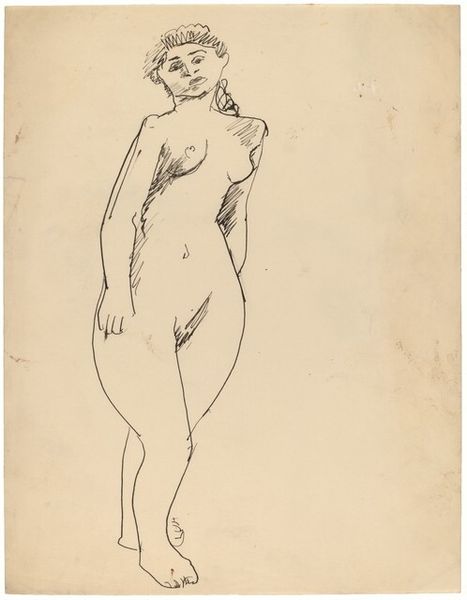![Untitled [standing nude with her left arm akimbo] [recto] by Richard Diebenkorn](/_next/image?url=https%3A%2F%2Fd2w8kbdekdi1gv.cloudfront.net%2FeyJidWNrZXQiOiAiYXJ0ZXJhLWltYWdlcy1idWNrZXQiLCAia2V5IjogImFydHdvcmtzLzBkZWQ5MTZlLTk5YTQtNDg0ZC04YTc1LWZiZWUzZDc0YjFjNC8wZGVkOTE2ZS05OWE0LTQ4NGQtOGE3NS1mYmVlM2Q3NGIxYzRfZnVsbC5qcGciLCAiZWRpdHMiOiB7InJlc2l6ZSI6IHsid2lkdGgiOiAxOTIwLCAiaGVpZ2h0IjogMTkyMCwgImZpdCI6ICJpbnNpZGUifX19&w=3840&q=75)
Untitled [standing nude with her left arm akimbo] [recto] 1955 - 1967
0:00
0:00
drawing, pencil
#
portrait
#
abstract-expressionism
#
drawing
#
figuration
#
bay-area-figurative-movement
#
pencil drawing
#
pencil
#
portrait drawing
#
nude
Dimensions: overall: 35.5 x 25 cm (14 x 9 13/16 in.)
Copyright: National Gallery of Art: CC0 1.0
Curator: Immediately striking, isn't it? Richard Diebenkorn’s "Untitled [standing nude with her left arm akimbo]" completed sometime between 1955 and 1967. A fairly straightforward pencil drawing on paper, quite skeletal actually, and undeniably intimate. Editor: I’m drawn to the almost ethereal quality despite its frank depiction. The figure seems both present and disappearing. I love the artist’s deliberate use of line to convey weight and volume—the hatching particularly around the shoulders. Curator: It is quite representative of a particular shift in post-war American art. This drawing surfaces amidst anxieties regarding the role of the body within both domestic and public spheres, in an era still heavily censored. What Diebenkorn does is strip away the idealization typical of nudes, presenting something more raw. Editor: True, the absence of a facial expression certainly removes a layer of conventional allure. But I am more interested in how the incompleteness serves the work's dynamic quality. The negative space isn't merely the absence of form; it is integral, shaping our perception of the figure itself. It brings dynamism and invites introspection. Curator: And this introspective feel, do you see it as reflective of a broader dialogue taking place during that period? The nude has such a complex history within art… From antiquity onwards, it’s always a political act, whether a celebration of idealized form or, as we see emerging here, a challenge to accepted canons. Editor: Precisely, this sketch captures the fleeting moment – its lightness invites a constant flow, and this provisional quality conveys such expressive meaning and sensitivity! Curator: Well, looking at this artwork gives a fascinating view into both the artist's process and a society in the throes of massive changes. The tension, the dynamism is ever so poignant. Editor: Agreed, and that’s a testament to Diebenkorn's formal skill and our enduring captivation with it. A great study in the power of less.
Comments
No comments
Be the first to comment and join the conversation on the ultimate creative platform.
